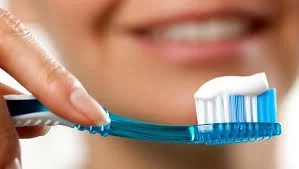
- Importance of Sensitive Enamel and Gums Care
- Features to Look for in Toothbrushes for Sensitive Teeth
- Types of Toothbrushes Suitable for Sensitive Enamel and Gums
- Tips for Maintaining Oral Health with Sensitive Teeth and Gums
- Real-Life Examples and Personal Experiences
Importance of Sensitive Enamel and Gums Care
Our teeth and gums are constantly exposed to various stresses, from acidic foods to aggressive brushing habits. For individuals with sensitive enamel and delicate gums, choosing the right toothbrush is critical. Sensitive enamel is the protective outer layer of teeth that, when worn down, exposes the inner dentin, causing discomfort and pain. Similarly, sensitive gums can easily become irritated or bleed if not cared for properly.
Proper care for sensitive enamel and gums helps prevent further damage, reduces discomfort, and promotes long-term oral health. Using the best toothbrush for sensitive enamel and gums care is a foundational step in this process. A toothbrush that is too harsh can worsen sensitivity and cause gum recession, while one that is too soft may not clean effectively. Finding the right balance is key.
Why Sensitivity Requires Special Attention
Sensitivity is often a sign that teeth and gums need gentler, more thoughtful care. Aggressive brushing, acidic diets, or untreated dental conditions can aggravate the problem. People with sensitive enamel often experience sharp pain when exposed to hot, cold, or sweet stimuli, making daily oral hygiene challenging.
The Role of a Toothbrush in Sensitivity Management
A toothbrush is more than just a cleaning tool; it directly impacts how much irritation your teeth and gums endure daily. Selecting a brush designed specifically for sensitive needs can drastically improve comfort and oral health outcomes.
Features to Look for in Toothbrushes for Sensitive Teeth
When searching for the best toothbrush for sensitive enamel and gums care, several key features should guide your decision.
1. Soft Bristles
Soft bristles are essential to gently clean without damaging enamel or irritating gums. Many dentists recommend extra-soft bristles for sensitive mouths, as they effectively remove plaque while minimizing abrasion.
2. Small, Rounded Brush Head
A compact brush head with rounded tips can reach difficult areas while reducing the risk of hurting sensitive tissues. This design allows for more precise brushing and better maneuverability, especially around the gumline.
3. Flexible Neck
A toothbrush with a flexible neck helps absorb pressure from brushing, reducing stress on enamel and gums. This flexibility encourages gentler brushing and helps prevent excessive force.
4. Ergonomic Handle
Comfortable grip and control reduce the tendency to brush too hard. An ergonomic handle promotes proper technique, which is vital for protecting sensitive areas.
Types of Toothbrushes Suitable for Sensitive Enamel and Gums
There are several toothbrush options tailored to sensitive teeth and gums, each with unique benefits.
Manual Toothbrushes with Soft Bristles
Manual brushes remain popular for sensitive care because they allow users to control pressure and speed. Selecting a high-quality soft-bristle manual toothbrush is a cost-effective and reliable choice.
Electric Toothbrushes with Sensitive Modes
Many electric toothbrushes now feature specialized “sensitive” or “gum care” modes. These modes adjust brush speed and intensity to offer gentle cleaning that’s still thorough. For example, oscillating-rotating brushes with soft heads can be particularly effective.
Silicone Toothbrushes
Innovative silicone brushes provide an ultra-gentle experience, ideal for those with extreme sensitivity. Their soft texture massages gums while cleaning without harsh friction.
To find the best toothbrush tailored to your unique sensitivity needs, Dentistry Toothtruth provides a curated selection of top products designed to offer both protection and effective cleaning.
Tips for Maintaining Oral Health with Sensitive Teeth and Gums
Choosing the right toothbrush is only part of a comprehensive approach to managing sensitivity.
Use Proper Brushing Technique
Brush gently using small circular motions rather than aggressive back-and-forth scrubbing. Overbrushing can accelerate enamel erosion and gum recession.
Choose a Suitable Toothpaste
Use toothpaste formulated specifically for sensitive teeth, which often contains ingredients like potassium nitrate to calm nerve endings.
Limit Acidic and Sugary Foods
Foods and drinks like citrus fruits, soda, and wine can wear down enamel. Moderating intake helps protect sensitive teeth.
Regular Dental Checkups
Professional cleanings and exams can identify and treat early signs of enamel wear or gum disease before they worsen.
Real-Life Examples and Personal Experiences
Jessica, a teacher with long-standing enamel sensitivity, shared how switching to a soft-bristle manual toothbrush with a small head made a dramatic difference. Previously, she experienced gum bleeding and discomfort after brushing, but the right toothbrush eased these symptoms. Combining this with a sensitive toothpaste and mindful brushing habits helped her regain comfort during oral care.
Meanwhile, David, an active professional, found relief using an electric toothbrush equipped with a sensitive mode. The gentle oscillations cleaned his teeth effectively without aggravating his sensitive gums, allowing him to maintain a healthy smile without pain.
These stories highlight how personalized choices in oral care tools can transform the experience for those struggling with sensitive enamel and gums. For tailored recommendations and high-quality oral care products, Dentistry Toothtruth remains a trusted resource.







 Daniel Jeffrey Cohen, DDS5.0 (117 review)
Daniel Jeffrey Cohen, DDS5.0 (117 review) Gentle Dental Moreno Valley4.0 (147 review)
Gentle Dental Moreno Valley4.0 (147 review) Island Coast Dentistry5.0 (302 review)
Island Coast Dentistry5.0 (302 review) Dental Arts of Hastings-on-Hudson | Part of the Roligo Network4.0 (130 review)
Dental Arts of Hastings-on-Hudson | Part of the Roligo Network4.0 (130 review) East Valley Periodontics4.0 (993 review)
East Valley Periodontics4.0 (993 review) Schuller Dental5.0 (196 review)
Schuller Dental5.0 (196 review) The Importance of Oral Health Education During Pregnancy for a Healthy Pregnancy
The Importance of Oral Health Education During Pregnancy for a Healthy Pregnancy Best Tips for Brushing Your Teeth Properly for Healthy Gums: Essential Techniques for Oral Health
Best Tips for Brushing Your Teeth Properly for Healthy Gums: Essential Techniques for Oral Health Why Skipping Dental Checkups Can Lead to Bigger Oral Health Problems
Why Skipping Dental Checkups Can Lead to Bigger Oral Health Problems Advantages of Porcelain Dental Restorations
Advantages of Porcelain Dental Restorations How Can Diabetes Cause Tooth and Gum Problems? Preventing and Managing Oral Health Issues
How Can Diabetes Cause Tooth and Gum Problems? Preventing and Managing Oral Health Issues Healthy Habits for Promoting Good Oral Health and Hygiene: Tips for a Healthy Smile
Healthy Habits for Promoting Good Oral Health and Hygiene: Tips for a Healthy Smile